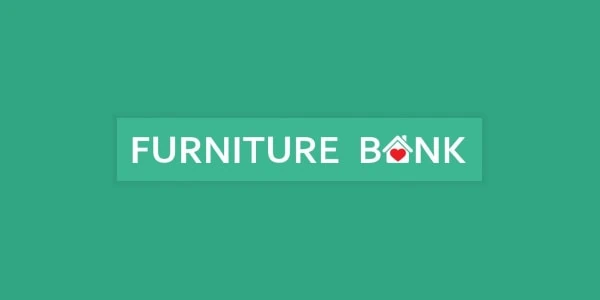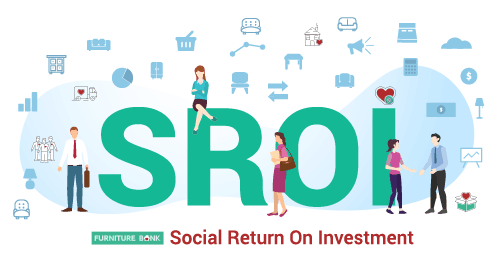Recycling – a fantastic process whereby used materials are whisked away to be cleaned, processed and turned back into new items. Every one of us does our part – diligently separating the glass bottles, plastic bottles, cans and paper from the rest of our garbage every day. Some of us even separate food waste and organic materials – all of which gets picked up by our municipal government service providers and taken off to be recycled. It’s a logical system, and we all feel good about doing something to keep our environment clean and healthy. Since household recycling became common-place in Ontario in the early 1990’s, there has been an increasing general awareness about litter reduction and the state of our over-flowing landfills. And awareness is a good thing.
The problem we face now is that we are all still using this historic reference point when we do our ‘good deed’ by recycling. We think about diversion from landfill; we think about keeping our parks and roadways clean; we think about the trees and the wildlife and how they must be so proud of us for doing our part. Very few of us have expanded that thinking to include other items; or, even more profoundly, to look more closely at our own buying patterns to assess whether we actually need to buy this specific item, or that specific item. For the most part, very few of us have connected our excessive consumption patterns with the growing volumes of waste and recyclables that we put out at the curbside each week.
We have been taught that both economic and environmental processes are linear: from the birth or creation of something new, through to the end of its (useful) life. This is especially true with regard to our consumption patterns: We know that ‘something’ is taken from the ground and built into ‘something’ else; we purchase that ‘something’ and use it for a period of time; and then when that ‘something’ is no longer useful to us, we dispose of it. And often, because we see these processes as linear, very few of us question what comes after. What happens to the glass bottle once my blue box is picked up? What happens to the old couch left at the curbside?
We have also been taught with simplified messaging to see things as a ‘whole’ rather than as their component parts: a bottle as ‘just a bottle’, rather than a container, a label, and a lid; a couch as just a couch, rather than a construct of fabric, stuffing, wood and metal.
Our landfills are filled with wasted value – unrecyclable plastics that still contain energy potential (BTUs), food waste that still contains nutrients, and even building components such as wood that could be used to repair or construct new products for use.
At a macro-level, regional and national economies, as well as multi-national corporations are looking closely at their supply chains to assess the implications of exponentially-increasing consumer demand combined with the increasing costs of essential resources. Outside of North America there is a growing feeling that we, as a species, need to reassess the systems we’ve created if we want to survive another two thousand years. We need to reconsider the linear model in our minds, and move to something else altogether. One model that is gaining traction and attention in particular is called the Circular Economy – and it is a model that is thrusting a more sophisticated view of recycling back into the public sphere again after 20 years of status quo.
The Circular Economy is a sophisticated technical concept that extends traditional linear thinking to deliberately, and by design, re-integrate components and materials from used items back into the manufacturing process: Effectively ‘closing the loop’ so that all parts of a product can be recycled and re-integrated back into a new product – with no waste going to landfills, and a reduced need to extract raw resources from the earth at a high cost to environment and community.
The Circular Economy future requires a renewed emphasis by manufacturers to design their products in a way that reduces toxic components, incorporates recyclable materials, and allows for easy disassembly as part of a recycling process once the consumer is finished with it. This future also requires governments and service providers to implement more comprehensive collection infrastructures so that 100% of these products and components can be captured and directed back into these efficient manufacturing systems. It sounds like a tall order, and there is no shortage of skepticism related to the technicalities and logistics required for such a system to actually work. But regardless of criticisms, it is becoming increasingly clear that the status quo, linear way of doing things is no longer sufficient if we want to ensure any type of future for our children.
If community-level initiatives could align with and imitate the changes that are needed at the macro-level, meaningful change would be within our grasp. What can we take away from the concept of Circular Economy that could help us to do our part to mitigate some of the negative impacts of a high-consumption society?
If we look to the foundation of Circular Economy thinking, we find a few key strategies that every person, everywhere can build on:
1) Think about what you are buying: Is there a similar product that comes with less packaging, or that contains less toxic ingredients and materials? Is there an alternative to buying this brand new item – or could an older one be upgraded or repaired instead? Can you envision what will happen to this item once you are done using it? Every purchase decision you make represents an opportunity for you to think more holistically about how your choices can impact the rest of the world – for worse or for better.
2) Think about what you are getting rid of: Could this item or a part of this item be used for something else; by someone else? If so – get on the internet and find out how to get it diverted for reuse. Furniture Bank is always interested in helping to ensure your old furniture and household items are redirected to those in your own community who are in need. Furniture Bank is even investigating opportunities to repair and repurpose slightly damaged items as one more way to help clients and keep valuable materials from going to waste. There are many organizations throughout the GTA who want to put your ‘old’ stuff to good use, such as Habitat for Humanity’s ReStores. The more we can find new uses for things, the closer we get to ‘closing the loop’ and being more resource efficient as a society.
It may take many decades for the world’s economies to evolve into a more circular, efficient system – but what is clear is that we need to start: decisive action needs to be taken now. It is time for us to assume a greater sense of ownership for our decisions – if not for your neighbour, then just for yourself – because the implications of continued high consumption and waste will affect each of us, in one way or another, and much sooner than we expect.
By Jennifer Russell
Jennifer has been recently appointed to the Board of Directors at Furniture Bank. Her background is in waste management and sustainability.






